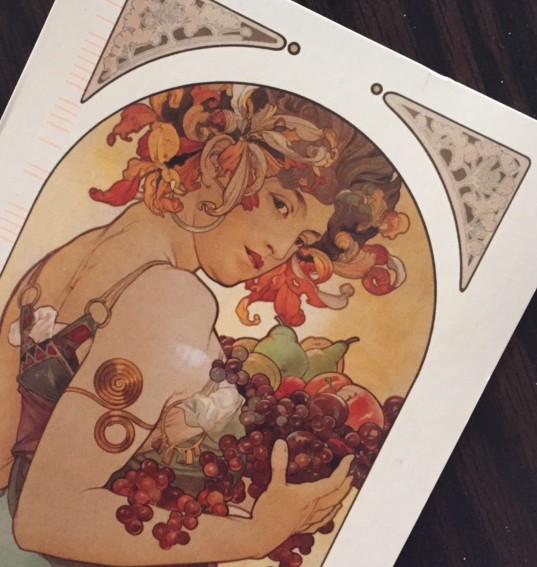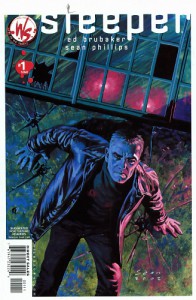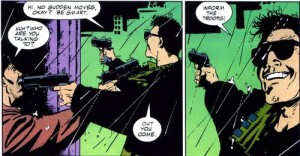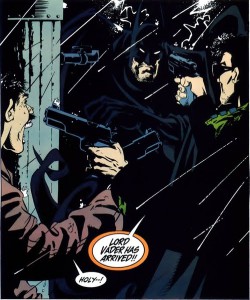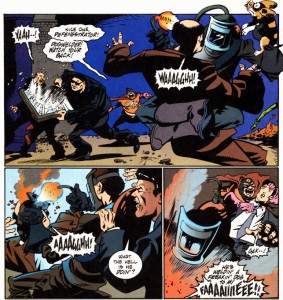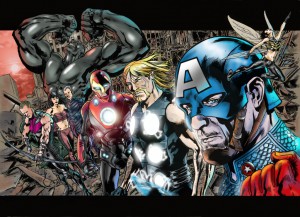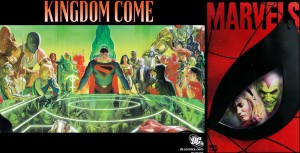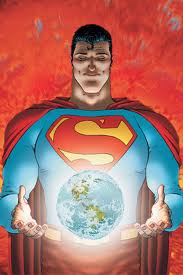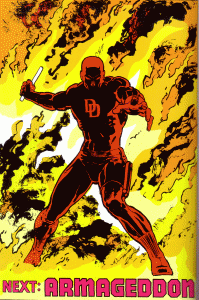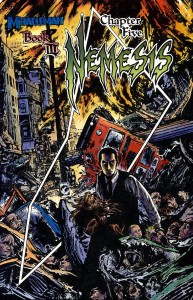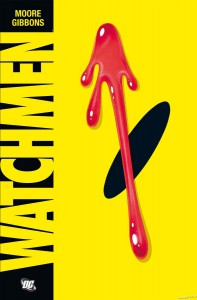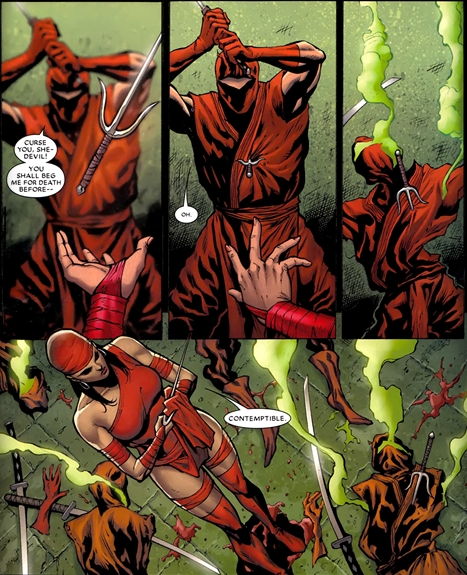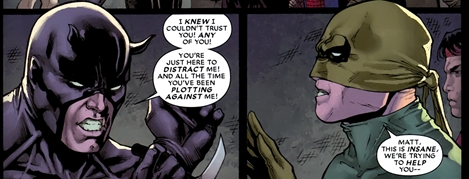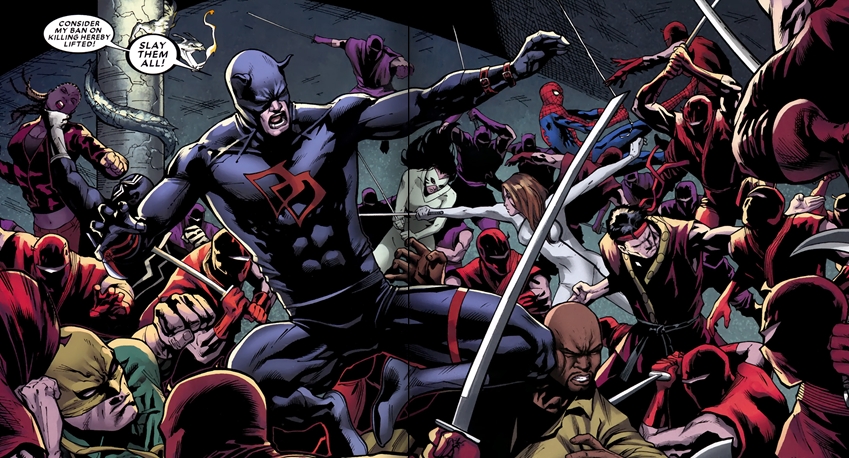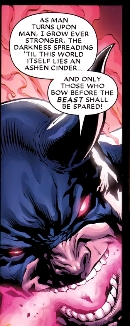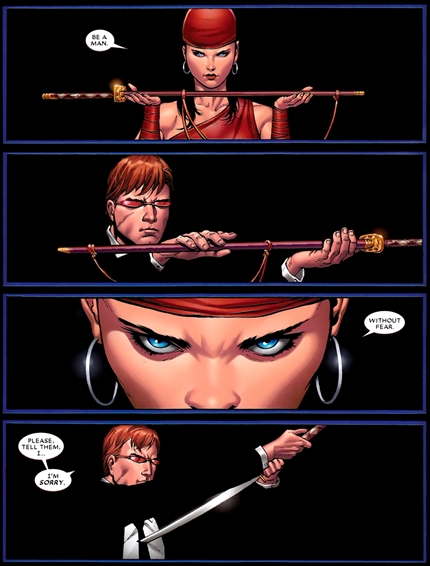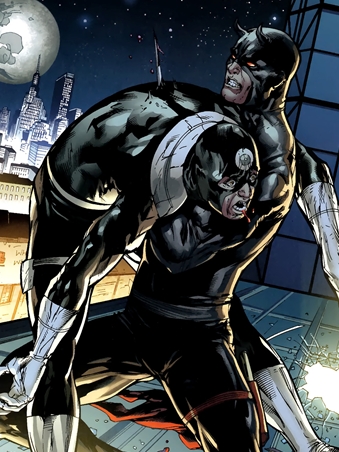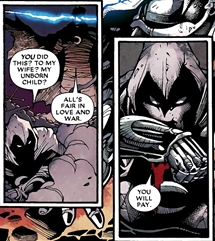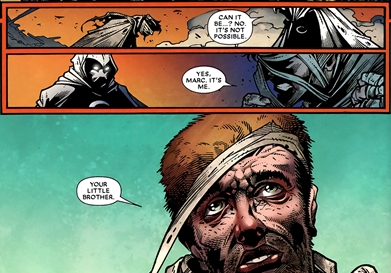* Alan Moore Homage, and a possible 11th title in this list.
** Limited to the two mainstream companies that have copyrighted the word.
*** Which have been collected into self-contained collections referred to, but not necessarily all the time, as graphic novels.
*** Temporally located around the turn of the 20th century.
Raja Sen wanted me to list my top 10 superhero comics. I looked up a list I had done a few years ago for Men’s World magazine, and decided that nothing in it deserved to change, except for some of the accompanying text.
Sleeper A nifty mash-up of noir intrigue and super-villainy, Sleeper is Ed Brubaker and Sean Philips’ story of a covert operative within the ranks of a criminal organization, whose dual life takes its toll on his moral judgement, his interpretation of right or wrong becoming skewed as he is manipulated as a pawn between the warring organization and the government. Crime fiction, except super powers are involved.This is one of the rare superhero graphic novels that blend costumed characters with gritty street-level realism and manages to make the combination work without dissolving into excessive grimness or parody.
The Brubaker/Philips team have worked on numerous collaborations, straight-up crime fiction or mash-ups with other genres – check out Fatale, Criminal and the new ongoing Fade-out.
Hitman – For a writer who claims to hate superheroes, Garth Ennis sure knows how to write a classic superhero title. Hitman, featuring a happy-go-lucky assassin who obtains telepathic powers and uses them to kill supervillains is a complete revelation. This overlooked gem of a comic, within a span of sixty chapters, transformed itself from an irreverent laugh riot poking fun at mainstream icons like Batman and Green Lantern into a blood-soaked tale of friendship and sacrifice.
This series also features Dogwelder, possibly the greatest superhero ever created on any medium.
Ultimates – Remember the first time Samuel L Jackson made an appearance at the end of Iron Man? That scene would never have happened without The Ultimates. Hell, nearly every bit of characterization of the characters in the Marvel movies was based on this series, a modern-day reworking of the popular Marvel supergroup The Avengers. Scottish writer Mark Millar interpreted the superhero phenomenon as a military project led by the United States army, and gave rise to a number of startling variations of familiar characters – Captain America as a duty-bound soldier trapped in the idealism of the ’40s, Giant Man as a wife-beater, Thor and his thunder-god ramblings as a sign of possible insanity, and Hulk as a sex-crazed cannibal. It could have been cheap schlock, but two things – Bryan Hitch’s magnificent cinematic artwork and Millar’s liberal use of the contemporary political climate elevates Ultimates from a Michael Bay ripoff to a tome worth of the ages.
There was a sequel (pretty good!), another (really bad!) and a bunch of other sequels (oh good lord!). They had creative names such as Ultimate Comics: The Ultimates, All-New Ultimates, and Avengers vs New Ultimates. Whether you choose to read them is entirely up to you, but please don’t expect me to sympathize.
Marvels/Kingdome Come The reason these two titles are tied is not because they both feature the painted art of Alex Ross. It’s because each graphic novel, one from Marvel, the other from DC, uses Ross’s art to imbue their respective universes with an amount of gravitas. While Busiek’s script for Marvels dealt with key events in the lives of the superheroes through the eyes of a photojournalist, Mark Waid wrote of an alternate future where heroism was all but dead, and it would take earth’s retired superheroes to avert the destruction of all humanity. Marvels and Kingdom Come both celebrate the iconic nature of superheroes, and you cannot help but mention both of them in the same breath.
Sometimes I get the feeling that these two series are exercises in fan-service for readers who grew up in the 60s and 70s. Other times, I marvel at the fact that long before the movie industry got their act together, Alex Ross’s art was the closest you got to seeing these characters as real people.
6
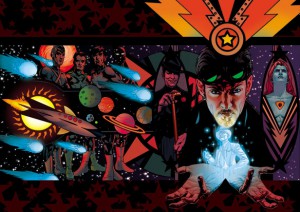
Starman What made James Robinson and Tony Harris’s Starman so special was the way it honored the long and checkered heritage of the character ( there had been five versions of Starman over 5 decades), and at the same time showed the evolution of a novice underdog into someone worthy of taking up the family mantle. Over the course of 81 chapters, Jack Knight – the son of the original Starman of the 1940s. A hero who refuses to wear a costume because he finds super-heroics at odds with his day job, a regular joe who finds friendship in the most unlikely places and a man who travels across the universe (and through time) for his love.
According to the contract between DC and James Robinson, the character of Jack Knight cannot be used in any subsequent stories without Robinson’s explicit permission. This is one of the rare instances when a comic company’s trademarked character is reserved for exclusive use for a writer.
All Star Superman – They said Superman was boring and unhip, too noble to be taken seriously. It took Grant Morrison and Frank Quitely’s epic saga to elevate this age-old superhero to the glory he rightfully deserves. All-Star Superman embraces the silly Silver Age elements of the Superman mythos – the bumbling secret identity, the curious girlfriend, the evil nemesis – and transforms them into a poignant, engaging saga of a god-like being who sees the potential in humanity and serves as an inspiration to everyone. This twelve-part series is possibly the Superman story ever written – and drawn.
Artist Frank Quitely’s pencilled work was directly used to print the comic, without a traditional inker. The digital coloring was done by Jamie Grant under specific instructions from Quitely, which gave the comic a distinctive glow and highlighted every bit of the artist’s detailed art.
Daredevil: Born Again When Frank Miller, once the regular penciller for Daredevil, was invited back to work for Marvel in 1986, he crafted an elegant story of the crimefighter’s greatest defeat, and his greatest triumph. Drawn by artist David Mazzuchhelli in a sleek, minimalist style, ‘Born Again’ is a story that borrows equally from American crime fiction and Christian theology. It pits Daredevil in a no-holds-barred struggle against the Kingpin, a crime lord and arch-nemesis who discovers his secret identity and decides to destroy his reputation and his life.
Miller and Mazzuchhelli would team up again the same year for Batman: Year One, a look at Batman’s early career. Director Christopher Nolan borrowed a number of elements from Year One for his movie, Batman Begins.
3
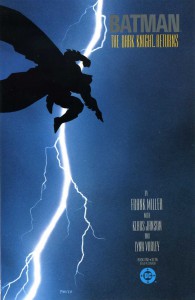
Batman: The Dark Knight Returns This was Batman’s finest hour. Donning his costume after 30 years of retirement, the Dark Knight fights mutant juvenile delinquents, has a final showdown with his archnemesis the Joker, and goes up against the US government by fighting mano-a-mano with Superman. Frank Miller and Klaus Janson’s story of an aged superhero’s comeback merged the cynicism of the Reagan administration and the paranoia of the Cold War with a twisted, media-centric worldview. It is one of the definitive Batman stories, an instant classic that has just gotten better and better with time, and has influenced – for good or for bad – every single Batman story that came after it.
Miller did a sequel to Dark Knight Returns in 2001, but a lot of story elements were changed post-9/11. The series was not so well-received because of its computer-generated coloring and idiosyncratic storytelling.
Miracleman What would it really be like if superpowered beings really walked the earth – the ways in which humanity might change, if society would ever be the same again. Alan Moore’s Miracleman answers these questions, and how! This sixteen-chapter storyline is a deconstruction of every superhuman cliche that has ever been worked into the page of a comic. By the end of his run, after you have had your brain seared by the concepts (including the harrowing visuals of destruction that follow an epic battle between Miracleman and his erstwhile protege), you will never look at another superhero comic the same way again.
The reason why Miracleman is not on many people’s radar is because it used to be out of print for nearly a decade, following legal issues about ownership of the character’s rights. Marvel comics are now reprinting the entire Moore and Gaiman run, bringing this classic series to a whole new generation.
Watchmen And then there’s this, Alan Moore and Dave Gibbons’ towering achievement – a twelve-chapter Last Word on the very idea of the superhero, a story set in an alternate 1980s where Nixon still presides over the USA, and masked vigilantes walk the streets. A work so precisely structured that even today, two decades after its publication, there is still no other work in the medium that can challenge its presence on the top of any such list. All that is to be said about this series has been covered already – and if you still haven’t read it, well, shame on you.
And then there’s Before Watchmen, a series of ruthless moneygrabbing corporate comics terrible storytelling choices absolutely brain-damaged prequels that DC published 2 years ago, which were meant to convince the publishing industry that the franchise is bigger than a work of art. Needless to say, lessons were learnt and hasty retreats were beaten. Whew.
